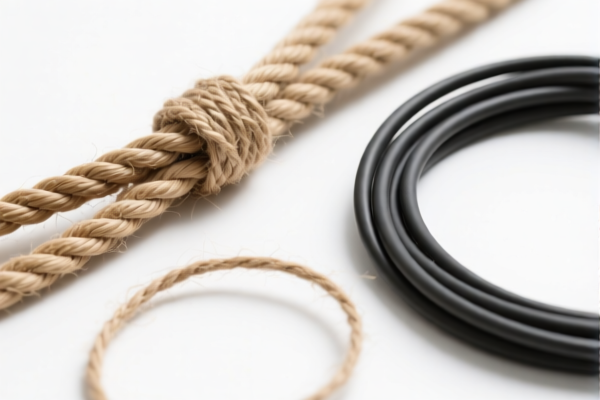| HS Code | Official Doc | Tariff Rate | Origin | Destination | Effective Date |
|---|---|---|---|---|---|
| 4202929100 | Doc | 72.6% | CN | US | 2025-05-12 |
| 4202929700 | Doc | 72.6% | CN | US | 2025-05-12 |
| 4205004000 | Doc | 56.8% | CN | US | 2025-05-12 |
| 4205000500 | Doc | 57.9% | CN | US | 2025-05-12 |
| 3926903300 | Doc | 36.5% | CN | US | 2025-05-12 |
| 3926909905 | Doc | 42.8% | CN | US | 2025-05-12 |
| 3916903000 | Doc | 61.5% | CN | US | 2025-05-12 |
| 3916902000 | Doc | 58.1% | CN | US | 2025-05-12 |
| 5609001000 | Doc | 57.9% | CN | US | 2025-05-12 |
| 5609004000 | Doc | 58.9% | CN | US | 2025-05-12 |
| 5404198080 | Doc | 61.9% | CN | US | 2025-05-12 |
| 5404191000 | Doc | 57.7% | CN | US | 2025-05-12 |
| 5607909000 | Doc | 61.3% | CN | US | 2025-05-12 |
| 5607503500 | Doc | 19.9¢/kg + 10.8%+55.0% | CN | US | 2025-05-12 |
| 8304000000 | Doc | 33.9% | CN | US | 2025-05-12 |
| 8304000000 | Doc | 33.9% | CN | US | 2025-05-12 |
| 9403999061 | Doc | 55.0% | CN | US | 2025-05-12 |




Bag Strap
A bag strap is a component used to carry a bag, typically over the shoulder, across the body, or in the hand. It provides a means of securing the bag to a person for convenient transport.
Material
Bag straps are constructed from a variety of materials, each offering different characteristics in terms of durability, comfort, and aesthetics:
- Nylon: A common synthetic material known for its strength, abrasion resistance, and water resistance. Often used in backpacks and messenger bags.
- Polyester: Similar to nylon, polyester is durable and resistant to stretching and shrinking. Frequently used in luggage and everyday bags.
- Leather: A traditional and aesthetically pleasing material valued for its durability and ability to develop a patina over time. Used in higher-end bags, often for handles and shoulder straps.
- Cotton/Canvas: Offers a more natural look and feel. Suitable for lighter loads and casual bags.
- Chain: Primarily used for decorative purposes or in specific bag styles (e.g., chain shoulder bags). Typically metal (steel, brass, etc.).
- Metal (other): Can be used for hardware components (buckles, D-rings) or occasionally for the entire strap in specialized applications.
- Webbing: A woven fabric, often nylon or polyester, used for adjustable straps and reinforcement.
- Foam/Padding: Used to add comfort, particularly on shoulder straps, often covered with another material.
Purpose
The primary purpose of a bag strap is to facilitate the carrying of a bag. Beyond this core function, straps contribute to:
- Weight Distribution: Properly designed straps distribute the weight of the bag across the body, reducing strain on the shoulders and back.
- Security: Straps help to keep the bag securely attached to the person, preventing theft or accidental dropping.
- Style: Straps contribute to the overall aesthetic of the bag and can be chosen to complement the bag's design.
- Adjustability: Many straps are adjustable, allowing the user to customize the fit for optimal comfort.
Function
Bag straps function through a combination of mechanical properties and attachment methods:
- Tensile Strength: The strap must be strong enough to withstand the weight of the bag's contents without breaking.
- Attachment Points: Straps are typically attached to the bag via metal hardware (buckles, D-rings, clasps) or sewn directly to the bag's body.
- Adjustability Mechanisms: Buckles, sliders, and other hardware allow the strap length to be adjusted.
- Padding/Comfort Features: Foam padding, ergonomic shaping, and breathable materials enhance comfort.
Usage Scenarios
Bag straps are used in a wide variety of scenarios, depending on the type of bag:
- Backpacks: Used for carrying books, supplies, and other items on the back.
- Shoulder Bags: Used for carrying everyday items over the shoulder.
- Crossbody Bags: Used for carrying items across the body, providing security and hands-free convenience.
- Tote Bags: Used for carrying groceries, shopping items, or other bulky items.
- Luggage: Used for carrying suitcases and other travel items.
- Purses/Handbags: Used for carrying personal items in a fashionable manner.
Common Types
- Fixed Length Straps: Straps with a non-adjustable length. Common in some handbags or decorative bags.
- Adjustable Straps: Straps with buckles or sliders allowing for length adjustment. The most common type.
- Detachable Straps: Straps that can be removed from the bag, allowing for different carrying options.
- Chain Straps: Metal chains used as straps, often found in evening bags or fashion accessories.
- Webbing Straps: Wide, woven straps often used in backpacks and messenger bags.
- Leather Straps: Straps made from leather, often adjustable or detachable.
- Padded Straps: Straps with foam padding for added comfort, commonly found in backpacks and camera bags.
- Crossbody Straps: Longer straps designed to be worn across the body.
- Shoulder Pads/Comfort Pads: Attachments added to straps for increased comfort.
Based on the provided reference material, “bag strap” can be classified under several HS codes, depending on the material and specific characteristics. Here's a breakdown:
-
4202929100: This HS code covers “Trunks, suitcases, vanity cases, attache cases, briefcases, school satchels, spectacle cases, binocular cases, camera cases, musical instrument cases, gun cases, holsters and similar containers; traveling bags, insulated food or beverage bags, toiletry bags, knapsacks and backpacks, handbags, shopping bags, wallets, purses, map cases, cigarette cases, tobacco pouches, tool bags, sports bags, bottle cases, jewelry boxes, powder cases, cutlery cases and similar containers, of leather or of composition leather, of sheeting of plastics, of textile materials, of vulcanized fiber or of paperboard, or wholly or mainly covered with such materials or with paper: Other: With outer surface of sheeting of plastics or of textile materials: Other: Other: With outer surface of textile materials: Of man-made fibers (except jewelry boxes of a kind normally sold at retail with their contents)”. This code applies if the bag strap is made of textile materials and is associated with the items listed (traveling bags, handbags, etc.). The tax rate is 72.6% (17.6% base tariff, 25.0% additional tariff, and 30.0% additional tariff after April 2, 2025).
-
4205004000: This HS code covers “Other articles of leather or of composition leather: Other: Straps and strops”. This is a direct match for “bag strap” if it’s made of leather or composition leather. The tax rate is 56.8% (1.8% base tariff, 25.0% additional tariff, and 30.0% additional tariff after April 2, 2025).
-
5404198080: This HS code covers “Synthetic monofilament of
67 decitex or more and of which no cross-sectional dimension exceeds 1 mm; strip and the like (for example, artificial straw) of synthetic textile materials of an apparent width not exceeding 5 mm: Monofilament: Other: Other Other”. This applies if the strap is a synthetic monofilament. The tax rate is 61.9% (6.9% base tariff, 25.0% additional tariff, and 30.0% additional tariff after April 2, 2025). -
5609001000: This HS code covers “Articles of yarn, strip or the like of heading 5404 or 5405, twine, cordage, rope or cables, not elsewhere specified or included: Of cotton”. This applies if the strap is made of cotton yarn or strip. The tax rate is 57.9% (2.9% base tariff, 25.0% additional tariff, and 30.0% additional tariff after April 2, 2025).
-
5609004000: This HS code covers “Articles of yarn, strip or the like of heading 5404 or 5405, twine, cordage, rope or cables, not elsewhere specified or included: Other”. This applies if the strap is made of materials other than cotton. The tax rate is 58.9% (3.9% base tariff, 25.0% additional tariff, and 30.0% additional tariff after April 2, 2025).
Important Note: The correct HS code depends on the material composition of the bag strap. Please verify the material to ensure accurate classification.
Customer Reviews
No reviews yet.